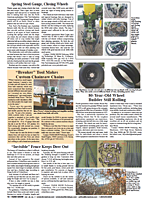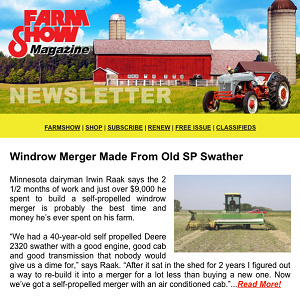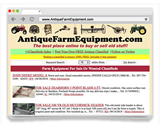Putting Waste Hides To Work
 ✖  |
If you need to dispose of animal hides, the Agricultural Utilization Research Institute (AURI) and the U.S. Department of Agriculture’s Agricultural Marketing Service (USDA-AMS) have suggestions. Their report, “Sustainable Uses for Animal Hides and Byproducts,” covers everything from preservation to composting, as well as extracting collagen, gelatin and other materials.
The 2 1/2-year research effort focused on small meat and poultry processors in the Upper Midwest and their challenges with hides. These challenges included financial barriers, the need for technical assistance, business development support, and solutions to overcome them. The project explored ways to strengthen industry resilience and develop practical solutions, with the goal of creating a regional pilot that could be replicated nationwide.
Much of the report offers little value to small processors due to the technology or costs required. However, entrepreneurs seeking opportunities may find useful ideas.
Hides today represent only one percent of an animal’s value. Reduced demand for leather and the cost of disposal have made hides a cost center rather than a profit center. Imperfections, such as branding marks and exposure to the elements, can result in rejects. Rising processing costs also have an impact.
A 2020 study by the Leather Hide Council of America noted that of the 33 million cattle slaughtered, 14.5% of hides ended up in landfills or burned. Even tanned hides produce trimmings and byproducts like hair.
The AURI report outlines the steps in the tanning process and the waste or byproducts it produces. It then explores a wide range of uses, from pet chews and snack foods to cosmetics and health care products.
The report’s tier system is perhaps most useful for small processors or entrepreneurs looking for opportunities. Every potential use covered falls into either Tier I Easy Implementation, Tier II High Capital Applications or Tier III Community/Municipal Application. The latter includes larger-scale uses like waste-to-energy and gasification.
Contact: FARM SHOW Followup, AURI, 510 County Rd. 71, Suite 120, Crookston, Minn. 56716 (ph 218-281-7600; communications@auri.org; www.auri.org; www.auri.org/wp-content/uploads/2024/06/AURI-Report-SustainableUses_0.9_revise.pdf).

Click here to download page story appeared in.
Click here to read entire issue
Putting Waste Hides To Work
If you need to dispose of animal hides, the Agricultural Utilization Research Institute (AURI) and the U.S. Department of Agriculture’s Agricultural Marketing Service (USDA-AMS) have suggestions. Their report, “Sustainable Uses for Animal Hides and Byproducts,” covers everything from preservation to composting, as well as extracting collagen, gelatin and other materials.
The 2 1/2-year research effort focused on small meat and poultry processors in the Upper Midwest and their challenges with hides. These challenges included financial barriers, the need for technical assistance, business development support, and solutions to overcome them. The project explored ways to strengthen industry resilience and develop practical solutions, with the goal of creating a regional pilot that could be replicated nationwide.
Much of the report offers little value to small processors due to the technology or costs required. However, entrepreneurs seeking opportunities may find useful ideas.
Hides today represent only one percent of an animal’s value. Reduced demand for leather and the cost of disposal have made hides a cost center rather than a profit center. Imperfections, such as branding marks and exposure to the elements, can result in rejects. Rising processing costs also have an impact.
A 2020 study by the Leather Hide Council of America noted that of the 33 million cattle slaughtered, 14.5% of hides ended up in landfills or burned. Even tanned hides produce trimmings and byproducts like hair.
The AURI report outlines the steps in the tanning process and the waste or byproducts it produces. It then explores a wide range of uses, from pet chews and snack foods to cosmetics and health care products.
The report’s tier system is perhaps most useful for small processors or entrepreneurs looking for opportunities. Every potential use covered falls into either Tier I Easy Implementation, Tier II High Capital Applications or Tier III Community/Municipal Application. The latter includes larger-scale uses like waste-to-energy and gasification.
Contact: FARM SHOW Followup, AURI, 510 County Rd. 71, Suite 120, Crookston, Minn. 56716 (ph 218-281-7600; communications@auri.org; www.auri.org; www.auri.org/wp-content/uploads/2024/06/AURI-Report-SustainableUses_0.9_revise.pdf).
To read the rest of this story, download this issue below or click
here to register with your account number.







